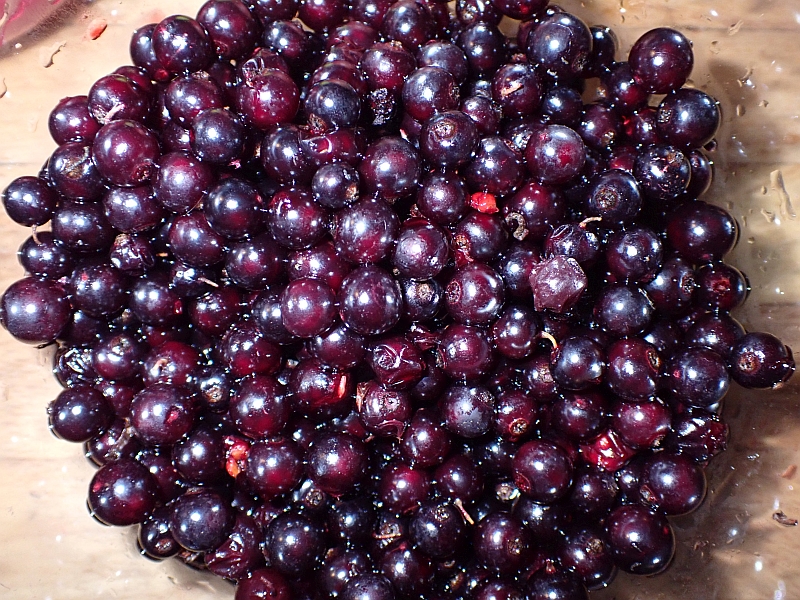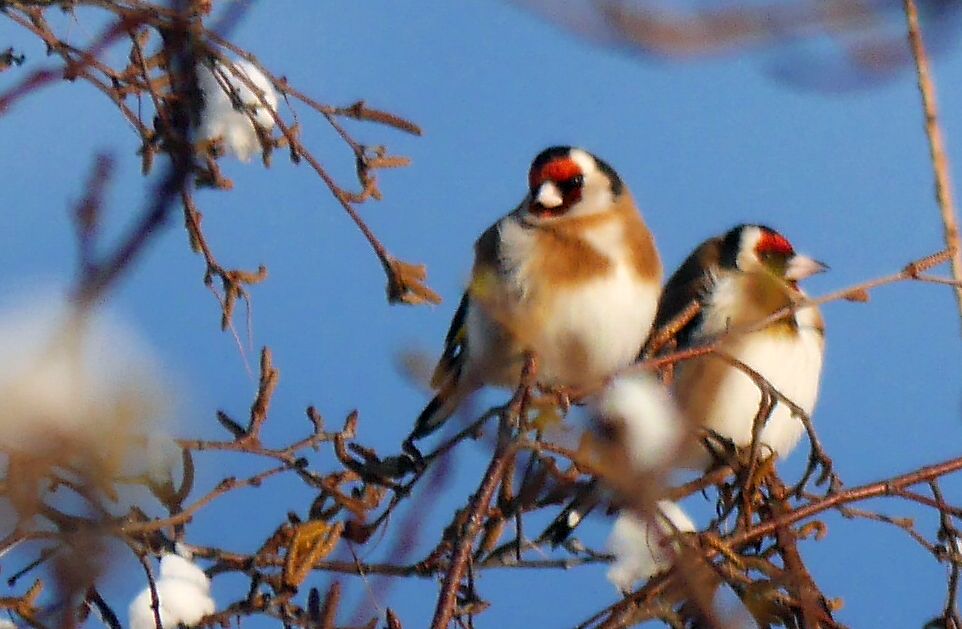As far as possible, I like to eat fresh fruit and berries from the garden, usually with muesli for breakfast. I’ve been self-sufficient for many years, mostly home grown but augmented with wild foraged bilberries / blåbær. From when the cellar stored apples are finished, usually in April to the first haskaps and strawberries are ready, we go over to rehydrated dried fruit. Currently these are the berries and fruit we are eating now in autumn as the first frosts threaten:
1. Elaeagnus umbellata (autumn olive; Japansk sølvbusk)
2. Rubus ‘Sonja’ (blackberry; bjørnebær) – the only blackberry cultivar I am aware of that is hardy enough for our climate, not freezing in winter. Productive with tasty berries too!
3. Ribes divaricatum “Worcesterberry” (Worcesterbær)
4. Ribes biebersteinii (Ribes petraeum var. biebersteinii) (black redcurrant; svartrips); isn’t truly black, more dark purple coloured; hang a long time on the bushes and don’t seem to be taken by thrushes (like blackcurrants)
5. Malus domestica (apple; epler) – eating the windfalls that won’t store long.


Tag Archives: epler
Balcony fieldfare
1 or 2 fieldfares (gråtrost) normally overwinter in the garden and this winter has been no exception. They appear in autumn attracted to the cultivated and wild fruit. Fallen apples then become most important as the winter progresses. When the first deep snow arrives, I help them by putting out a few apples that makes it easier for them. The birds are very territorial, defending their cache of apples quite aggressively against other fieldfares. I put out apples in two parts of the garden which has lead to two birds overwintering. They are quite shy and have good vision, so only slight movement in windows puts them up. I’ve gradually moved the apples closer to the house and yesterday I put some apples on my balcony only a couple of metres from where I work….to my surprise, it wasn’t long before a bird found them and I made this video today!
Daniil and the Apples
Having survived the wapato harvest last week (see https://www.edimentals.com/blog/?p=31597), our helper Daniil Titov was put to another challenging, harvesting the last apples….there are always many apples that we cannot reach with the apple picker, so tree shaking has to be resorted to as it’s too dangerous to use ladders on the steep slope. These will be dried in the near future. We already have enough for eating fresh until April in this year’s bumper harvest of Aroma apples. There are still quite a few at the top of the tree which couldn’t be shaken down, left for the birds.

Waxwing and Tawny Owl
A small flock of Waxwings (sidensvans) finally arrived at the end of November and have been foraging in the garden since (rowans / rogn failed this year). In these videos, they are eating apples, elderberry and guelder rose berries (epler, svarthyll and krossved). I’ve heard tawny owl (kattugle) calling in the garden regularly recently too and the last video is a recording of one calling.
Rose-ringed parakeet
Finally, having heard the bird for several months, a rose-ringed parakeet / halsbåndparakitt (blue mutation) finally turned up in the garden today and sat eating apples in good view of the living room for some time! It’s known to be an escaped cage bird and several attempts have beem made to capture it. 



Is feeding birds a good thing?

Feeding birds in winter isn’t necessarily a good thing and at least one study has shown that birds lay lower numbers of eggs when fed well, perhaps due to an unnatural unbalanced oil-rich diet: https://blog.nature.org/science/2015/01/05/winter-bird-feeding-good-or-bad-for-birds
However, there are many studies showing the opposite. But is good winter survival and artificially high populations necessarily a good thing apart from entertaining us and increasing awareness of the natural world.
Then there’s the spread of disease at bird feeders as with the greenfinch (grønnfink) in the UK (populations plummeted and bird feeders no doubt contributed to the spread). That birds are discouraged from migrating and stay in the same area year round can also lead to greater exposure to disease.
But what about the production of bird food? That happens often in large fields, mostly using conventional BigAg non-organic systems which directly impacts local bird populations by pesticides and habitat loss. Here in Norway, little of the bird feed is grown in-country.
For these reasons, I try as far as possible to provide natural food for the birds so that they can find alternatives and I can delay putting out food as long as possible. Home grown apples are put out for the thrushes, I tidy seed heads in spring and nettle seeds loved by finches are allowed to hang all winter. Local grain can also be put out for yellowhammers (gulspurv).
In the case of goldfinches (stillits), their main food is burdock (borre) and I have introduced Arctium lappa (greater burdock / storborre) to my garden for them and greenfinches (grønnfink). However, at this time of year they tend to move over to the birdfeeder.
Here’s a couple of videos from the weekend of these beautiful birds that once were rare in this part of Norway, but are becoming more common each year. See other goldfinch posts here: https://www.edimentals.com/blog/?s=goldfinch
The return of the waxwings
The first two videos show waxwings eating apples opened up by fieldfares and blackbirds yesterday and also eating guelder rose (krossved) berries, so far not touching the elderberries (svarthyll).
Earlier in the day, the waxwings were hunting insects on birch trees and occasionally high into the air in pursuit of insects:
…and the morning after, they had discovered the yew berries!
…and on unharvested redcurrants (rips)….with a fieldfare (gråtrost) and brambling (bjørkefink) at the end of the video!
